Understanding the Difference Between Residential and Commercial HVAC Systems
When deciding on a heating, ventilation, and air conditioning (HVAC) system, it’s essential to know the differences between residential and commercial options. Each type is designed for specific environments, and understanding these nuances can help you select the best system for your needs.
Residential HVAC systems are primarily designed for comfortable living environments in homes. Typically smaller and less complex than commercial systems, residential units are tailored for the needs of individual families. They aim to provide a balanced climate control system that keeps indoor spaces cozy, regardless of fluctuating outdoor temperatures. These units can include various setups such as central air conditioning, heat pumps, furnaces, and ductless mini-split systems. Common features of residential HVAC systems include:
- Size and Capacity: Smaller size with lower heating and cooling outputs, generally ranging from one to five tons.
- Installation: Easier installation, with ground-level units often placed in basements, attics, or outside.
- Control Systems: Simple thermostat controls for user-friendly temperature regulation.
- Efficient Energy Usage: Designed to maximize energy efficiency, which is essential for residential consumers.
In contrast, commercial HVAC systems are generally more substantial and built to service businesses, schools, factories, and other larger buildings. These systems must accommodate a larger number of occupants and equipment, making their design more complex to ensure effective climate control across extensive spaces. Commercial systems have unique characteristics, including:
- Size and Capacity: Larger capacity, often greater than five tons, able to service multiple zones or units simultaneously.
- Installation: Complex installation requirements, often including rooftop units or large mechanical rooms.
- Control Systems: Advanced controls that allow for multiple zones, occupancy detection, and integration with building management systems.
- Maintenance Needs: More intensive maintenance is required due to the complexity and scale of the systems.
One significant difference lies in energy-efficiency standards. Residential systems typically focus on SEER (Seasonal Energy Efficiency Ratio) ratings to ensure low energy consumption. In contrast, commercial systems often utilize different metrics, such as EER (Energy Efficiency Ratio) and demand control ventilation strategies to optimize their performance for larger spaces.
An important factor in selecting an HVAC system relates to the building’s layout. Residential units require air distribution methods that effectively heat or cool individual rooms. Commercial systems, however, often distribute air through a network of ductwork that serves several areas simultaneously, making zoning control crucial.
To give you a clearer understanding, here’s a comparison table highlighting key differences:
| Feature | Residential HVAC | Commercial HVAC |
|---|---|---|
| Typical Size | 1-5 tons | 5+ tons |
| Installation Complexity | Simple and quick | Complex and time-consuming |
| Control Systems | Basic thermostats | Advanced building management systems |
| Energy Efficiency Focus | SEER ratings | EER and demand control |
The maintenance of HVAC systems also varies greatly between residential and commercial. Residential systems may only require annual check-ups, while commercial units often need routine checks every few months to ensure optimal performance and to prevent breakdowns. This maintenance is crucial due to the high usage and varying demands of commercial systems.
Understanding the difference between residential and commercial HVAC systems can aid you in making informed decisions about what best fits your climate control needs. Whether you are outfitting your home or a large commercial space, knowing these distinctions will ensure health, comfort, and energy efficiency. For more detailed advice on proper HVAC selection and maintenance, you can visit Energy.gov or check out HVAC.com.
Key Components of Residential HVAC Systems
Understanding the key components of residential HVAC systems is essential for homeowners. These systems are responsible for heating, ventilation, and air conditioning, playing a vital role in maintaining a comfortable indoor environment. Let’s break down these essential parts to help you grasp their significance and function.
1. Heating Elements
The heating elements in a residential HVAC system are crucial for maintaining warmth during colder months. The common heating sources include:
- Furnaces: Typically powered by natural gas, propane, or electricity, furnaces heat air and distribute it through ductwork.
- Heat Pumps: This versatile system can both heat and cool your home. In heating mode, it extracts heat from outside air and transfers it indoors.
- Boilers: These systems use water to generate heat. They circulate hot water or steam through radiators.
2. Cooling Components
Keeping your home cool during the summer months is another essential function of HVAC systems. The main cooling components include:
- Air Conditioners: Split-system air conditioners remove heat from indoor air and expel it outdoors, using refrigerants to facilitate this process.
- Evaporator Coils: These coils absorb heat from the indoor air, which cools the air before it’s circulated back into your living space.
- Condensing Units: Located outside, these units expel heat absorbed by the refrigerant from the indoor evaporator coils.
3. Ventilation Systems
Proper ventilation is key to ensuring good air quality in your home. A well-functioning ventilation system includes:
- Air Ducts: These pathways deliver conditioned air throughout the home. Sealing and insulating ducts is vital for energy efficiency.
- Vent Registers: Found in every room, these allow air to enter or exit, and can often be adjusted for temperature control.
- Exhaust Fans: Installed in kitchens and bathrooms, they help remove moisture and odors, maintaining a fresh indoor environment.
4. Thermostats
Thermostats are the brains of your HVAC system, allowing you to control indoor temperatures easily. Types of thermostats include:
- Manual Thermostats: Simple devices where you set the desired temperature using a dial or slider.
- Programmable Thermostats: Allow you to set specific temperature schedules, optimizing energy use.
- Smart Thermostats: Can be controlled remotely via smartphone apps. They learn your temperature preferences over time for better efficiency.
5. Air Filters
Air filters play a crucial role in maintaining indoor air quality. They trap dust, allergens, and pollutants. Key considerations for air filters include:
- Types of Filters: Popular types are HEPA, fiberglass, and pleated filters, each offering varying levels of filtration efficiency.
- Maintenance: Regularly changing or cleaning filters (at least every 1-3 months) ensures optimal airflow and extends the life of your HVAC system.
6. Maintenance Components
To keep your HVAC system functioning well, certain components require regular maintenance:
- Drain Lines: These help remove condensation. Keeping them clear of clogs is crucial to prevent water damage.
- Blower Motor: Responsible for the airflow through the system, it should be checked and lubricated regularly.
If you want to delve deeper into information about HVAC systems, consider visiting Energy Saver for energy-efficient practices or Air Conditioning, Heating, and Refrigeration Institute (AHRI) for industry standards and guidelines.
Understanding these key components not only helps in making informed decisions regarding your HVAC system but also in ensuring that your home remains comfortable year-round. Periodic inspections and maintenance often lead to improved efficiency and extended system lifespan.
Essential Features of Commercial HVAC Systems
When it comes to choosing the right HVAC system for a commercial space, understanding the essential features is paramount. Commercial HVAC systems differ significantly from residential systems, primarily due to the unique demands and complexities of larger buildings. The following key features highlight why these systems are designed to cater specifically to commercial needs.
Capacity and Size
- Commercial HVAC systems possess a higher capacity than residential systems. They are capable of cooling and heating larger spaces, such as offices, retail stores, and warehouses.
- These systems are often modular, allowing businesses to scale up or down according to changing needs. This adaptability is beneficial, especially for growing companies.
Complexity of Design
- Commercial systems are typically more complex, involving multiple units working together. These can include rooftop units, chillers, and boilers.
- The design often incorporates zoning, allowing different areas of a building to maintain distinct temperatures based on usage and occupancy.
Energy Efficiency
- Due to their size and complexity, commercial HVAC systems are designed with energy efficiency in mind, often featuring advanced controls and technologies. This leads to reduced operational costs over time.
- Some systems are equipped with energy recovery ventilators (ERV) which exchange heat between incoming and outgoing air, further enhancing efficiency.
Air Quality Control
- Maintaining air quality is crucial in commercial settings, where occupancy rates can vary widely. Many commercial systems include high-efficiency particulate air (HEPA) filters to capture pollutants and allergens.
- Ventilation strategies are also important, allowing fresh air to flow while maintaining a comfortable environment. Implementing sensors can optimize airflow based on real-time occupancy data.
Maintenance Requirements
- Due to their intricate designs and usage frequency, commercial HVAC systems require more frequent maintenance compared to residential units. Regular inspections help to identify issues before they escalate.
- Contracting with specialized service providers ensures that maintenance is performed according to best practices. This can prevent costly breakdowns and expensive repairs down the line.
Climate Control Features
- Commercial HVAC systems can include sophisticated climate control technologies. These systems may feature programmable thermostats and IoT (Internet of Things) connectivity, allowing remote management and monitoring.
- Some systems have the capability to adjust temperature and humidity based on time of day or occupancy levels, enhancing comfort for employees and clients alike.
System Types
| System Type | Description |
|---|---|
| Rooftop Units (RTUs) | Commonly installed on rooftops, these units provide space heating and cooling and are often used in larger buildings. |
| Chiller Systems | These systems remove heat from a liquid via vapor-compression or absorption refrigeration cycles, ideal for large commercial buildings. |
| Variable Refrigerant Flow (VRF) Systems | These systems allow for the simultaneous heating and cooling of different areas, maximizing efficiency based on needs. |
Understanding these essential features will guide you in selecting the right HVAC system for your commercial space. The investment may seem significant, but the benefits—efficiency, comfort, and air quality—pay off in the long run.
For further insights on choosing commercial HVAC systems, consider visiting HVAC.com and Energy.gov.
Energy Efficiency: Residential vs. Commercial HVAC Solutions
When it comes to heating, ventilation, and air conditioning (HVAC) systems, understanding energy efficiency is key, especially when comparing residential and commercial solutions. Both types of HVAC systems are designed to provide comfort but do so under different circumstances and with varied efficiency ranges.
Residential HVAC systems primarily focus on individual homes. These systems usually comprise:
- Furnaces
- Heat Pumps
- Central Air Conditioners
- Wall Units
On the other hand, commercial HVAC systems cater to larger buildings such as offices, shopping malls, or factories, featuring components like:
- Chillers
- Cooling Towers
- Variable Air Volume (VAV) Systems
- Packaged Rooftop Units
Energy efficiency is essential for both residential and commercial HVAC systems, but it manifests differently in each setting. Let’s peek into the key aspects of HVAC energy efficiency in both domains.
Size and Load Calculation
One significant difference between residential and commercial HVAC systems is their sizing and load calculation. Residential systems utilize the Manual J calculation method to determine the heating and cooling requirements of a home. In residential settings, proper sizing is vital. An oversized unit can lead to short cycling, which wastes energy.
In contrast, commercial buildings typically employ the Manual N method. These systems account for larger space requirements and consider the various spaces within a building, such as offices, meeting rooms, and storage. Properly sizing commercial HVAC systems ensures that energy efficiency is achieved while meeting the demands of different operational areas.
System Efficiency Ratings
The efficiency of an HVAC system is measured using different ratings, notably the Seasonal Energy Efficiency Ratio (SEER) for air conditioners and the Annual Fuel Utilization Efficiency (AFUE) for furnaces. Residential systems generally aim for a SEER rating of at least 14. However, many modern models can achieve ratings as high as 20 or more, significantly improving energy efficiency.
For commercial HVAC systems, the efficiency standards are often stricter due to the larger scales involved. Commercial units often have to meet higher SEER or AFUE ratings to comply with local and state regulations. Implementing high-efficiency units can lead to reduced energy consumption and lower utility bills.
Operational Hours and Usage Patterns
Residential HVAC systems typically operate based on a household’s schedule. Families may turn on their HVAC systems during specific hours, leading to predictable energy usage patterns. Homeowners can utilize programmable thermostats that optimize heating and cooling schedules to match when individuals are at home.
In contrast, commercial HVAC systems run for longer hours and experience different levels of usage throughout the day. Large office buildings may require cooling during working hours, but shopping malls may need consistent HVAC operation to maintain a comfortable environment for customers. Adjusting settings in commercial systems using smart technology can greatly enhance energy efficiency.
Maintenance Practices
Regular maintenance is crucial for both residential and commercial HVAC systems to sustain energy efficiency. For residential properties, homeowners often overlook filter changes, which can block airflow and increase energy costs. On the other side, commercial facilities require comprehensive maintenance programs to tune various components efficiently due to their complexity.
Implementing an energy management system (EMS) in commercial spaces can keep track of real-time system performance and highlight maintenance needs, ensuring optimal efficiency. Scheduling routine checks for both residential and commercial systems is vital for preserving energy-saving benefits.
Incentives for Energy Efficiency
In both the residential and commercial sectors, energy efficiency upgrades can offer financial incentives. Homeowners may qualify for rebates through local utility companies for upgrading to high-efficiency systems. Likewise, commercial properties may take advantage of tax deductions and incentives for energy-efficient installations.
In light of this information, it is clear that the differences between residential and commercial HVAC solutions encompass many aspects, from size and load calculations to operational patterns and incentives. Understanding these distinctions allows you to choose the right HVAC system that maximizes energy efficiency based on your particular needs.
For deeper insights and expert evaluation, you can visit Energy.gov or check ASHRAE’s website for guidance on HVAC standards and efficiency measures.
Maintenance Needs for Residential and Commercial HVAC
Having a solid understanding of the maintenance needs for HVAC systems is essential for homeowners and business owners alike. Residential and commercial HVAC systems have different requirements due to their size, complexity, and usage. Addressing these needs effectively ensures operational efficiency, prolongs the lifespan of the units, and maintains indoor air quality.
Understanding the Differences
The main differences between residential and commercial HVAC systems often lie in their design and complexity. Residential systems are usually smaller and less complicated, designed to heat or cool single-family homes. In contrast, commercial systems handle larger spaces such as offices, shopping centers, or schools and usually involve sophisticated components and technology.
Maintenance Needs of Residential HVAC
Regular maintenance for residential HVAC systems typically focuses on key areas:
- Filter Replacement: Homeowners should check filters monthly and replace them every 1-3 months, depending on usage.
- Clean Coils: Condenser and evaporator coils need cleaning annually to ensure optimal heat exchange.
- Inspect Ductwork: Homeowners should inspect ducts for leaks or blockages, potentially sealing them to improve efficiency.
- Check Thermostat: Ensure the thermostat is functioning correctly and consider a smart thermostat for better energy management.
- Professional Annual Maintenance: Schedule a technician to inspect and service the system once a year, focusing on refrigerant levels, electrical connections, and overall system health.
Maintenance Needs of Commercial HVAC
The maintenance needs for commercial HVAC systems are more complex due to their scale. They usually include:
- Regular Component Inspections: Check components like chillers, boilers, and cooling towers frequently to ensure they are functioning properly.
- More Frequent Filter Changes: Filters need to be changed more often—every month or less during peak usage seasons.
- Duct Cleaning: Ducts may require professional cleaning at least once a year to maintain air quality and system efficiency.
- Monitoring Control Systems: Commercial HVAC systems may use advanced control systems which need regular diagnostics to ensure they are responding correctly.
- Compliance with Health Regulations: It’s important to follow local health codes which may dictate specific maintenance practices, especially in places like restaurants or medical facilities.
Cost Considerations
When comparing residential and commercial HVAC maintenance costs, several factors come into play:
| Aspect | Residential | Commercial |
|---|---|---|
| Frequency of Service | Once a year | Quarterly or monthly |
| Cost per Service | $100 – $300 | $300 – $1,500 |
| Complexity of System | Low | High |
| Average Lifespan | 15-20 years | 10-15 years |
Understanding these costs can help both homeowners and business owners budget effectively for their HVAC maintenance needs. Investing in regular maintenance can lead to savings over time by preventing costly repairs and ensuring energy efficiency.
Why Regular Maintenance Matters
Regular maintenance for both residential and commercial HVAC systems is essential for several reasons:
- Improved Efficiency: Regular checks ensure that the system runs at optimal efficiency, which can lower utility bills.
- Enhanced Lifespan: Routine maintenance can significantly extend the lifespan of HVAC systems.
- Better Air Quality: A well-maintained HVAC system contributes to healthier indoor air quality.
- Preventive Action: Regular inspections enable early detection of potential issues before they escalate into major problems.
For professional guidance on residential HVAC maintenance, you can visit Energy Saver. Alternatively, for commercial systems, review the insights provided by resources like HVAC.com. Whether it’s for your home or business, investing in proper HVAC maintenance pays dividends in comfort, efficiency, and long-term savings.
Cost Considerations for Residential and Commercial HVAC Installations
When evaluating the cost considerations for HVAC installations, it’s essential to understand the differences between residential and commercial systems. Each type of system has unique requirements, which can significantly affect budget estimates and overall expenses. You’ll want to weigh various factors such as size, equipment choice, installation complexity, and ongoing maintenance.
Size and Capacity
Residential HVAC systems are typically smaller and designed to heat or cool a specific home. In contrast, commercial HVAC systems are larger, intended to serve multiple rooms or whole buildings. The size directly impacts installation costs:
- Residential Systems: These systems usually range from 1.5 to 5 tons.
- Commercial Systems: These can range from 5 tons to several hundred tons, depending on the building’s needs.
Equipment and Technology
The type of equipment required influences overall expenses significantly. Residential systems often use more standard, single-unit systems, while commercial applications may require sophisticated equipment, such as:
- Chillers for larger buildings.
- Variable Air Volume (VAV) systems to regulate air flow efficiently.
- Boilers for heating in larger spaces.
This kind of specialized equipment used in commercial setups generally incurs higher upfront costs but tends to be more energy efficient over time, often leading to lower energy bills.
Installation Complexity
Installation plays a crucial role in cost. Residential installations are generally more straightforward, often completed in just a few hours to a couple of days, depending on the complexity and existing infrastructure. However, commercial installations can take much longer due to the need for electrical and plumbing work to integrate with larger systems:
- Residential Installations: Quick and generally less disruptive.
- Commercial Installations: May require extensive renovation, which can drive up labor costs and installation time.
Maintenance Costs
Post-installation, maintenance for HVAC systems is necessary to ensure longevity and efficiency. Costs can differ widely between residential and commercial systems:
- Residential Systems: Typically involve basic maintenance tasks, such as filter changes and seasonal check-ups.
- Commercial Systems: Require more intense servicing due to their complexity. You may need specialized service contracts for heating, ventilation, and air conditioning in commercial settings.
Routine maintenance for commercial HVAC can be more expensive due to the requirement for specialized technicians and extensive service agreements.
Energy Efficiency and Long-Term Savings
When evaluating installation costs, also consider long-term energy efficiency. Commercial systems often have higher upfront costs but, with better energy efficiency ratings, can lead to substantial savings:
- Energy Star ratings can guide efficiency levels in choosing equipment.
- While residential systems may have initial savings, they could lead to higher energy costs in the long run.
Remember, investing in energy-efficient models upfront can save you money in utility bills over time.
Permitting and Regulation Costs
Another cost consideration comes from local regulations. Commercial buildings often face more stringent compliance standards than residential buildings. You may need to factor in costs for permits, inspections, and potential adjustments to meet these regulations:
- Residential Permitting: Typically less complex and cheaper.
- Commercial Permitting: Can be extensive and costly, as they must adhere to building codes that ensure safety and efficiency.
Deciding between the installation of residential and commercial HVAC systems involves numerous factors, all of which can significantly impact your final costs. For more detailed information about HVAC systems, check out resources from Energy Saver and ASHRAE.
The Role of Technology in Modern HVAC Systems
Modern HVAC (Heating, Ventilation, and Air Conditioning) systems are revolutionizing the way we connect with our indoor environments. Today’s technology plays an essential role in enhancing comfort, improving efficiency, and reducing energy consumption in homes and businesses alike.
One of the most significant advancements in HVAC technology is the integration of smart systems. Smart HVAC systems allow homeowners and business operators to control their heating and cooling settings remotely through smartphones or tablets. This convenience means you can maintain an optimal temperature even when you’re not at home or work.
Advanced sensors are also becoming increasingly popular in HVAC systems. These sensors monitor various factors such as temperature, humidity, and air quality. By providing real-time data, they help maintain a comfortable indoor environment while optimizing energy usage. For example, if humidity levels rise, the system can automatically adjust to increase ventilation and improve comfort.
Furthermore, the introduction of variable refrigerant flow (VRF) systems offers another layer of sophistication. VRF systems can simultaneously cool and heat different areas of a building, allowing for greater flexibility in temperature control. This is particularly beneficial for offices and large commercial spaces where different zones may require different conditions.
Some important advantages of modern HVAC technology include:
- Energy Efficiency: New HVAC systems are designed to use less energy while providing the same or better comfort levels.
- Improved Indoor Air Quality: Modern systems often include filtration technology that helps remove allergens and pollutants from the air.
- Remote Access: Smart thermostats enable easy monitoring and control from anywhere.
- Data Analytics: Cutting-edge HVAC systems can analyze usage patterns to suggest ways to save energy.
- Integration with Renewable Energy: Many new systems can work alongside solar panels or other renewable energy sources, promoting sustainability.
Today’s HVAC technology also incorporates advanced energy management systems. These systems help optimize energy consumption by analyzing usage patterns and making recommendations for efficiency improvements. This can lead to reduced utility bills, which is especially important for commercial buildings where energy expenses can be substantial.
Another key aspect of modern HVAC systems is the implementation of smart thermostats. Devices like the Nest or Ecobee learn your schedule and preferences, adjusting the temperature accordingly to save energy. They can also send alerts if a system is malfunctioning or if the filters need changing. This not only keeps your environment comfortable but also keeps maintenance costs down.
While technology offers enormous benefits, it is important to choose the right system based on your specific needs. Factors such as the size of your home or business, your budget, and local climate conditions should all be considered when selecting an HVAC system. Consulting with a professional can be invaluable in making these decisions. Reputable resources include the American Society of Heating, Refrigerating and Air-Conditioning Engineers for industry standards, or Energy.gov for energy-saving tips.
To benefit from these modern systems, regular maintenance is essential. Scheduled check-ups to clean parts, check refrigerant levels, and ensure that the sensors are functioning properly can prolong the life of your HVAC system. Additionally, it can help maintain energy efficiency. Some new systems have diagnostic capabilities, alerting you to problems before they turn into expensive repairs.
The role of technology in modern HVAC systems is transformative. From smart systems that provide convenience and control to advanced sensors that optimize efficiency, technology is shaping how we approach heating and cooling. By investing in a state-of-the-art HVAC system, you can enjoy enhanced comfort, improved air quality, and significant energy savings—all while effectively managing your indoor environment.
Key Takeaway:
When it comes to heating, ventilation, and air conditioning (HVAC), understanding the differences between residential and commercial systems is crucial for effectively meeting specific needs. Both systems play vital roles in providing comfort, but they cater to different environments, resulting in distinct features, components, and considerations.
Residential HVAC systems are typically designed for single-family homes or smaller living spaces. Key components include furnaces, air conditioning units, and duct systems that circulate air throughout the house. These systems are often more compact and easier to install, making them suitable for home settings. Their maintenance usually involves routine filter changes and inspections, which can often be handled by homeowners themselves.
On the other hand, commercial HVAC systems are built to support larger buildings, like offices, schools, and shopping centers. These systems include complex units like chillers, rooftop units, and expansive ductwork designed to handle the diverse load requirements of larger spaces. Commercial systems prioritize energy efficiency on a much broader scale, often integrating advanced technologies, such as Building Automation Systems (BAS), that control temperature and ventilation across multiple spaces simultaneously.
Energy efficiency is a significant consideration as well; while residential units focus on heating and cooling individual homes, commercial HVAC systems must deliver performance across wider areas, requiring more sophisticated solutions. As such, the technology employed in commercial systems often includes variable refrigerant flow technology and energy recovery ventilators, which can dramatically lower energy costs.
In terms of maintenance, commercial systems demand a more structured and scheduled approach due to their complexity and the critical role they play in business operations. In contrast, residential systems may have more straightforward maintenance needs.
Cost plays a fundamental role in choosing between residential and commercial HVAC solutions. Installation costs for commercial HVAC systems tend to be higher due to their size and complexity, but their long-term efficiency can lead to considerable energy savings.
Ultimately, selecting the right HVAC system depends on understanding these differences. Whether you’re a homeowner considering a new system or a business owner in need of efficient climate control, recognizing the unique characteristics of residential and commercial HVAC can help you make informed, cost-effective decisions that ensure comfort and efficiency in your space.
Conclusion
As you explore the distinctions between residential and commercial HVAC systems, it becomes clear that each is specifically designed to meet different needs. Residential HVAC systems focus on providing comfort within homes, featuring components tailored for smaller spaces and individual preferences. These systems prioritize simplicity and user-friendliness, making them ideal for homeowners who seek efficient climate control.
On the other hand, commercial HVAC solutions encompass a wider range of functionalities to serve larger buildings. They include advanced technology and essential features that ensure indoor air quality and temperature regulation for more extensive and diverse spaces. The energy efficiency of these systems is crucial not only for cost savings but also for meeting environmental standards, showcasing a key difference between the two realms.
Maintenance is another vital consideration, as residential systems typically require less frequent servicing than their commercial counterparts. The complexity and scale of commercial systems demand regular upkeep to maintain efficiency and prevent costly breakdowns.
Cost also plays a significant role in the decision-making process. While residential installations might be more straightforward and budget-friendly, commercial setups can involve higher initial investments, but their long-term efficiency and technology integration may offer better returns.
Additionally, the rise of smart technologies is transforming both residential and commercial HVAC systems, enhancing control and efficiency. By understanding these differences, homeowners and business operators can make informed decisions tailored to their specific heating and cooling needs, ultimately leading to cost-effective and comfortable environments.
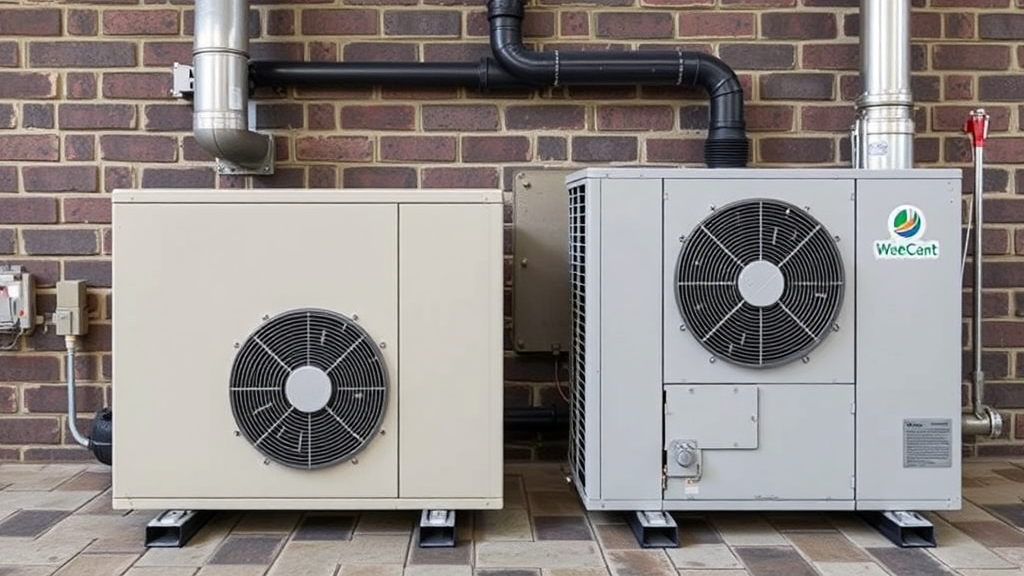
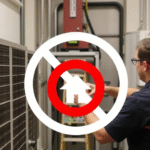
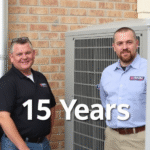
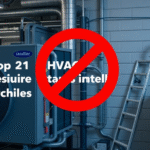
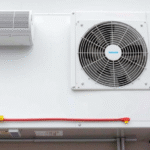
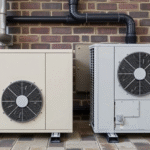
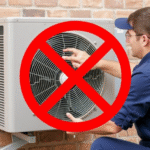
Leave a Reply